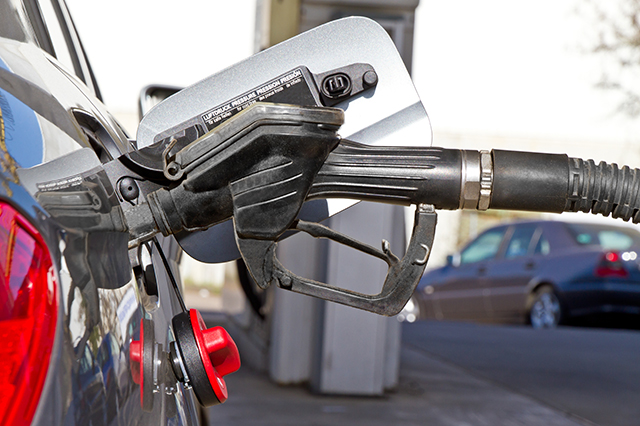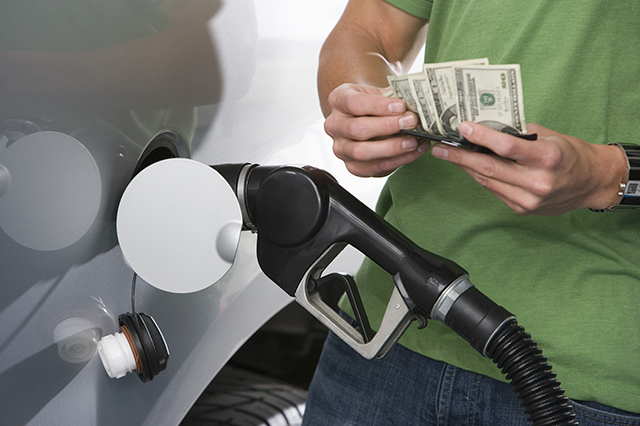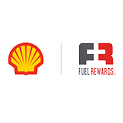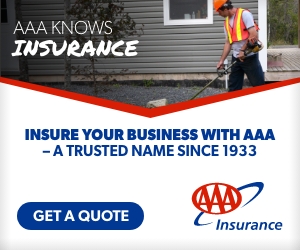There are a ton of tricks you can utilize to maximize your miles per gallon. Start with these gas saving tips.
- Avoid buying gas when there’s a delivery truck at the station. Recent deliveries stir up sediment, which can clog your fuel filter. (And don’t forget, AAA members can save at the pump with Shell.)
- Annual tuneups and inspections are vital. Check your vehicle’s owners manual for recommended maintenance intervals and be sure to inspect suspension and chassis parts for possible misalignments. Problems such as bent wheels, axles, bad shocks and broken springs all create engine drag (and are unsafe when traveling at high speeds). Visit AAA.com/AAR to search for AAA Approved Auto Repair facilities near you.
- Avoid overfilling your gas tank, which can cause spills and waste. Never fill the gas tank past the first “click” of the fuel nozzle.
- After filling up, make sure the gas cap clicks three times. Improperly sealed gas caps allow fuel to vaporize.
- Track local gas prices with GasPrices.AAA.com and keep posted on day-to-day price changes.
- Properly inflated tires are safer, last longer and can improve your gas mileage by more than 3% per tire. Check your tire pressure at least once a month and compare it with the recommended pressure listed in your owners manual and on the placard in your car door. Inflate your tires as needed and be sure to check tire pressure when your tires are cold. A good time to check is early in the morning after your car has been idle overnight.
- Save money with self-service whenever possible and choose to pay in cash if there is an extra charge to use a credit card.
- Keep your eyes open to find good prices at the pump. You could even apply for a credit card, which offers gas savings when using the card for purchases.
- In order to reduce your fuel consumption, keep windows closed when traveling at highway speeds. Open windows cause aerodynamic drag.
- Think ahead when approaching hills. Only accelerate before you reach the hill, not while you’re on it.
- Slow down! Although vehicle reach their optimal fuel economy at different speeds, gas mileage usually decreases rapidly over 60 mph.
- Both acceleration and deceleration waste fuel. Try to drive at a constant speed and avoid tailgating. The driver in front of you could be unpredictable, making you brake or speed up more than necessary. Plus, it’s dangerous.
- Use cruise control when possible. The small, more precise adjustments made by the car’s cruise control system will keep your speed constant and save you fuel.

- Even on cold mornings, avoid warming up your engine at idle. Today’s cars are designed to start and go, saving you gas.
- If you have a manual transmission, don’t keep your left foot on the clutch pedal while driving. The slightest pressure puts mechanical drag on components, wearing them down prematurely.
- Avoid driving along rough roads whenever possible. Dirt and gravel can cost you up to 30% of your gas mileage.
- Use alternate roads when they prove to be safer, shorter and straighter. Corners, curves and lane jumping all require extra gas. The shortest distance between two points is always a straight line. Plan your route with the AAA Mobile app.
- Traffic lights are generally timed for your motoring advantage. By traveling steadily at the legal speed limit, you increase your chances of getting more green lights throughout your trip. Pay attention to the lights on your daily commute and try to anticipate whether they’ll turn green or red by the time you get there.
- Gas stations near major highways often charge more for gas because land is generally more valuable in these locations, increasing overhead costs. Those higher costs are passed on to consumers. Before a road trip, fill up at your local station. If you must fill up near the highway, try stations near state border lines, which tend to price their gasoline less aggressively.
- Find the best gas prices along your route with the AAA Mobile app.
- Park your car so that you can easily travel in forward gear when you return to it. It’s a minor step, but worth putting on a gas saving tips list!
- Remove snow tires during good weather seasons; traveling on deep tire treads hurts your fuel economy.
- Operating the air conditioner on the maximum level can reduce your mpg by 5% to 25%, compared to not using it. Try to park your car in the shade so you won’t have to keep the AC working as hard. Turn off the air conditioning five minutes before you reach your destination.
- Remove excess weight from the trunk or inside of the car: extra tires, child seats, unnecessary heavy parts, etc. Extra weight reduces mileage, especially when driving up inclines.
- On large sport-utility vehicles and minivans, one of the simplest gas saving tips is to remove unneeded third-row seating. Some third-row seats weigh over 100 pounds. This is extra weight your engine has to deal with, which can waste gas.
- Carpools reduce travel monotony and gas expenses. They also reduce traffic congestion.
- Combining errands into one trip saves you time and money. Several short trips taken from a cold start can use twice as much fuel as a longer multi-purpose trip covering the same distance with a warm engine. Trip planning ensures that traveling is done when the engine is warmed-up and efficient.
- In bad traffic jams, cars seem to constantly speed up and slow down, while trucks tend to roll along at the same leisurely pace. A constant speed keeps shifting to a minimum, which is important to those who have to wrangle with those 10-speed truck transmissions, but it also aids fuel economy. It takes much more fuel to get a vehicle moving than it does to keep it moving. Rolling with the big rigs saves fuel (and aggravation).
- Idling burns 1 gallon of gas per hour and will earn you zero mpg. Turn off your engine when your car is just sitting. You’ll not only save fuel, but you’ll also help the environment by not releasing more emissions from your car than absolutely necessary.
- Wax your car and keep it clean. This will reduce aerodynamic drag, thus providing better mileage.
- Walk between stops. Once you get into town, some of your stops may be near each other. Park between some or all of them and walk or park in the first spot you find. If you wander all over the parking lot looking for a really close parking space, you’ll use more gas.
- Track your mileage in real time. You may know what your consumption looks like from tank-to-tank, but that’s really not enough. Knowing the mileage you’re getting in real time and comparing it to what you got yesterday is one of the most useful gas saving tips you can practice.
- These days, many offices offer more flexible hours, so errands can be run at almost any time. Avoid being stuck in traffic if all you have to do is leave 30 minutes earlier or come in 30 minutes later.
- Try to purchase vehicles that get good gas mileage. The difference between 20 and 40 mpg is momentous for your wallet.
- Don’t use premium fuel if it’s not necessary. If your car specifies regular fuel, don’t buy premium under the mistaken belief that your engine will run better. Most cars are designed to run just fine on regular gasoline. Check your owners manual to find out what grade your car requires.
- Use your garage. Parking there will help your car stay warm in winter and cool in summer, so you don’t have to depend as much on your air conditioning when you drive.
- Try to avoid traffic on busy days or times when it is raining, windy or barometric pressure is high. Rain and high barometric pressure create extra air drag that uses more fuel to create and maintain forward motion.
What are your special gas saving tips? Tell us in the comments below.
39 Thoughts on “37 Gas Saving Tips”
Leave A Comment
Comments are subject to moderation and may or may not be published at the editor’s discretion. Only comments that are relevant to the article and add value to the Your AAA community will be considered. Comments may be edited for clarity and length.

















Bicycles are another great way to save on gas. If you regularly make commutes that are a few miles or less, consider biking there instead. You’ll spend $0 on gas and get a great workout in the process (the value of which is too great to be measured).
If you’re like me and live within 5 miles of virtually everywhere you commute to on a regular basis, there’s no reason not to take advantage of the utility of bikes.
Do not use a drive-thru if you know it will take more than five minutes. Go inside instead so you are not wasting gas. Create a large distance between you and the car in front of you so when they break you can just take your foot off the gas instead of breaking. Many cars break because they are tailgating the car in front of them or they break at curves, or they break because they see a car in an opposite lane, or they see a police officer or they see a red or yellow light ahead or a traffic jam.
When I see that I am about to approach a stop sign or yellow/red light. I stop accelerating and roll until I get to it.
Same as Kathy’s March 28 statement
The recommendations, while accurate as far as they go, are a bit simplistic. When I drive to my best friend’s house, around 180 miles from mine, I take the back roads. When I do that, instead of driving around 70, and being bored enough that I’m wishing for the trip to be over, I’m driving probably an average of a little over 50, and thoroughly enjoying myself, both because the driving is fun (I have a Civic, a peppy car with agile handling, and a stick shift), and because the scenery is quite pretty. I sometimes even stop to take photos–including of old classic cars which I often see parked along the route.
excellent tips….THANK YOU